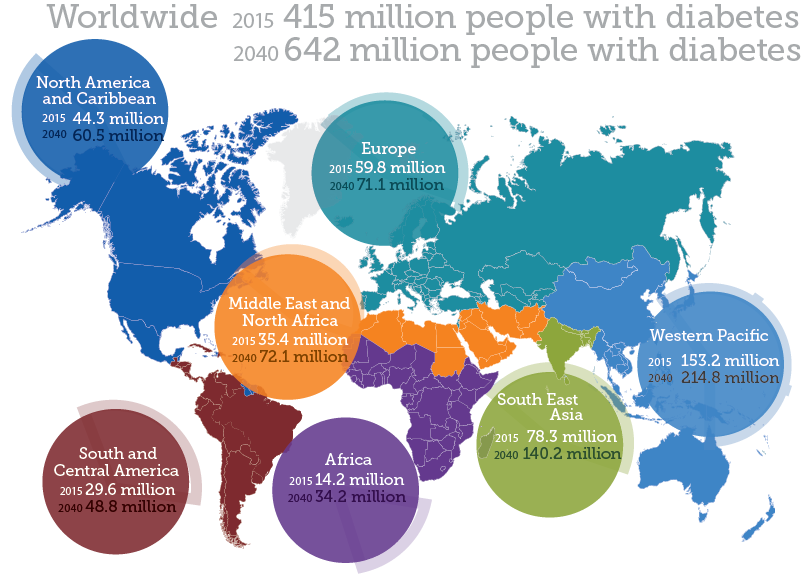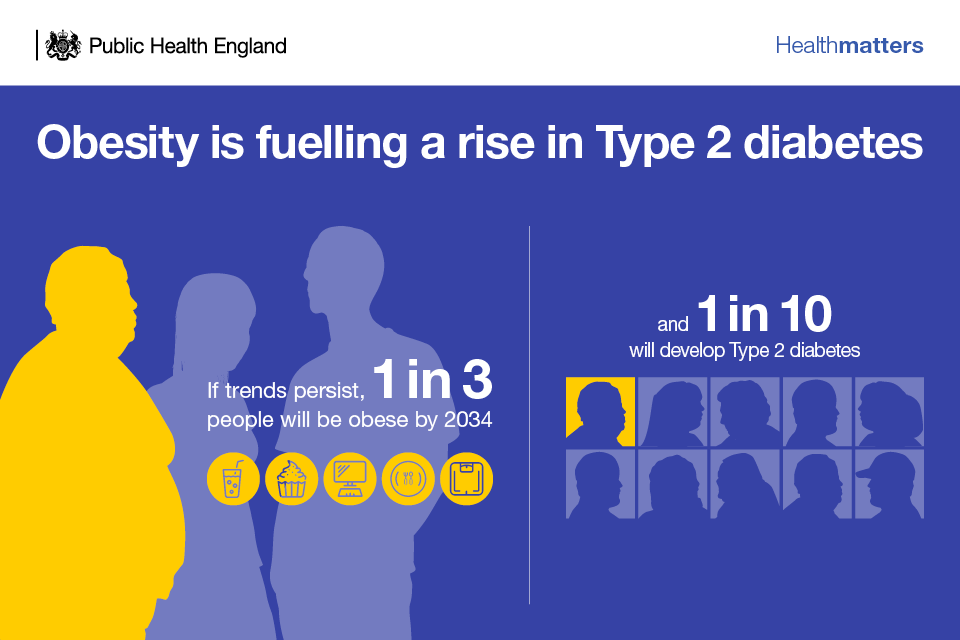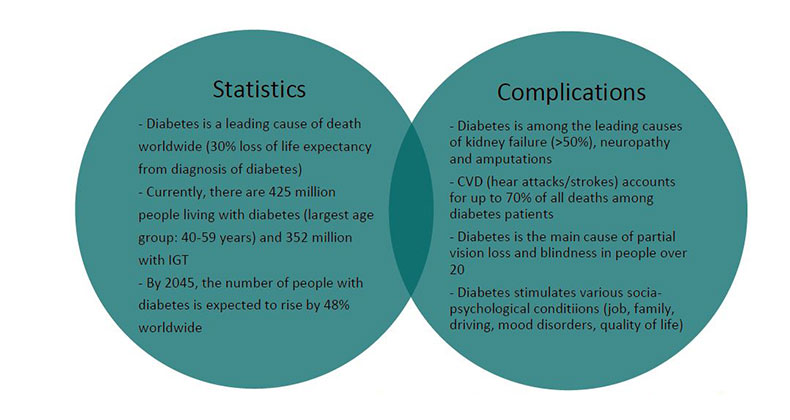Why are children suffering from adult diabetes?
Let’s cut to the chase. The number one cause of death around the world is type 2 diabetes. You may have heard that cardiovascular disease is the number-one killer, but it’s cardiovascular disease, stroke, and kidney failure, all secondary to type 2 diabetes.
And type 2 diabetes is a largely preventable disease. 
Recently, I presented to the Cuenca English-Speaking Lions Club. This organization was newly chartered in November of 2018 and is headed up by Mark Davis, who with his wife Dianna, relocated to Cuenca from the Houston-Galveston area of Texas.
Mark asked me to speak about diabetes and on its impact on children.
Just a week earlier I presented at the Fourth International Congress of Diabetes Education, sponsored by Casa de la Diabetes, a foundation dedicated to providing education and medical care to all people with diabetes. In my talk about type 2 diabetes and lifestyle management, I demonstrated how the diagnosis of type 2 diabetes, formally known as “adult diabetes” is on track to double by 2030, and that it’s a global epidemic, linked to the explosion in overweight and obesity in just about every region and every country around the world.
 Type 1 & Type 2: What’s the difference?
Type 1 & Type 2: What’s the difference?
There are different forms of diabetes — the most well known are type 1 and type 2. Juvenile diabetes is now known as type 1 diabetes or ‘insulin-dependent diabetes’. It is an autoimmune disease that occurs when the pancreas stops producing the hormone insulin, necessary to manage blood glucose levels. Why does the pancreas stop producing insulin? It is still unknown but scientists are researching possible genetic and environmental causes.
Type 1 diabetes typically affects children and young adults, and there are other types of insulin-dependent diabetes, following the destruction of the pancreas’ beta cells (that make insulin) and could happen at any age — sometimes from disease or injury. Read more here. Because type 1 requires constant management, patients must juggle their carbohydrate intake and insulin administration by testing and treating conscientiously to avoid dangerously high or even more urgent, extremely low blood sugar. Technologies including wearable sensors and insulin pumps are making life with type 1 more manageable, but they’re not available to everyone, both due to costs and because some countries are not yet in the distribution loop.

Western-style lifestyles having a devastating global impact
Type 2 diabetes was formerly known as ‘adult diabetes’ and is by far is the most common type of diabetes — almost 90 percent of people with diabetes have type 2 or a sub-type of type 2. Until the past 15-20 years type 2 was seen mainly in adults over 45 years but today type 2 is increasingly seen in children, adolescents, and younger adults. Why? Known risk factors include overweight and obesity linked to lack of physical activity and poor diet.
Type 2 diabetes is said to be an “environmental disease” and certainly exposure to huge portions of cheap, processed foods is one ‘environmental’ risk. Manufacturers spend billions on advertising cheap fast food and sugary beverages, making them look ‘sexy’ and ‘fun’ but there’s barely any money devoted to advertising fresh, whole foods.
And ‘environment’ can mean something more diabolical. Scientists are studying whether exposure to environmental chemicals known as ‘endocrine disruptors’ is linked to increased risk to all types of diabetes, but especially to type 2, and to the increased risk for obesity. ‘Endocrine disruptors’ include air pollutants, BPA, flame-retardants, pesticides, and more. Read more from Diabetes and the Environment here.
 Unlike the rapid and acute onset of symptoms and immediate treatment for type 1, in type 2 diabetes the pancreas gradually loses its ability to produce enough insulin (insulin insufficiency) to keep blood sugars in a normal range (~70-99 mg/dL). As well, many develop insulin resistance, where the body does not respond to the insulin that is produced.
Unlike the rapid and acute onset of symptoms and immediate treatment for type 1, in type 2 diabetes the pancreas gradually loses its ability to produce enough insulin (insulin insufficiency) to keep blood sugars in a normal range (~70-99 mg/dL). As well, many develop insulin resistance, where the body does not respond to the insulin that is produced.
However, people can live successfully with diabetes. It is when diabetes is uncontrolled, that complications are dire, including heart disease, stroke, kidney failure, blindness, and premature death.
Especially worrying is the explosion in the rate of type 2 diabetes, especially in the developing world. And as reported in the American Diabetic Association journal Diabetes Care, “Diagnosing diabetes is key to affording the opportunity to treat diabetes, and diabetes control is key to reducing the risk of complications. Yet the magnitude of undiagnosed diabetes and poor control of diabetes is large. And just as certain subgroups of the population are affected disproportionately by diabetes and diabetes complications, so are they affected disproportionately by undiagnosed diabetes and poor control.”
When a child is diagnosed with type 1 diabetes, treatment starts immediately. There is no delaying treatment — the symptoms are dramatic — extreme thirst, weight loss, fatigue, constant urination — the failure of the pancreas to produce insulin results in extremely high blood glucose, likely hospitalization and then education and treatment.
And as I emphasized in the Lions Club meeting, on average, a person will have high blood sugars for an average of six to seven years before being diagnosed with type 2 diabetes, and by then may have already suffered irreversible damage to their eyes (retinopathy) and their kidneys (renal failure). This is so damn serious — this means younger people are especially at risk for complications.
‘It’s not your daddy’s diabetes’
The Arkansas Children’s Foundation writes that the health consequences of having type 2 diabetes at a young age appears to be more dangerous and lead to more complications than being diagnosed with type 1. “It’s not your daddy’s diabetes,” they write. Someone who develops type 2 before age 30 has a higher risk for kidney failure, heart attack, stroke, and blindness at an early age. About 40 percent of kids with type 2 diabetes have no signs or symptoms!

A kid is more at risk if one or both parents have type 2 diabetes or high blood sugar, or if the mother had gestational diabetes, a ‘temporary’ condition that occurs in pregnancy but that increases the risk for developing type 2.
And, if the child is overweight and sedentary, the risk is increased.
Early warning signs of type 2 diabetes include increased urination and thirstiness, and a darkening and thickening of the skin called “acanthosis nigricans,” most often seen at the back of the neck, armpits, elbows, and knees, is a visible risk factor for both kids and adults.
And type 2 diabetes may be a preventable disease. Whereas the word ‘malnutrition’ was formerly associated with starvation and lack of calories, today the word more likely signifies an excess of calories and a deficit of nutrition. This “double burden of malnutrition” refers to the coexistence of undernutrition along with overweight or obesity, or diet-related noncommunicable diseases such as type 2 diabetes.
 Latin America and Ecuador are at extreme risk. Dr. Edgardo Gaitán, founder of Panama’s La Escuela para Diabéticos and el médico de referencia de Naciones Unidas writes in Metro Libre, “We are seeing the fruits of decades of malnutrition represented by the excess of junk food, sugary drinks, and sugars. Great damage has made sedentary lifestyle, where traditionally kids played very physically active games, but have been replaced by video games and Internet activity.
Latin America and Ecuador are at extreme risk. Dr. Edgardo Gaitán, founder of Panama’s La Escuela para Diabéticos and el médico de referencia de Naciones Unidas writes in Metro Libre, “We are seeing the fruits of decades of malnutrition represented by the excess of junk food, sugary drinks, and sugars. Great damage has made sedentary lifestyle, where traditionally kids played very physically active games, but have been replaced by video games and Internet activity.
But the problem is not as simple as telling the kids to go out to do physical activity, since our streets are no longer as safe as they once were. To send a boy to the street in a city as unfriendly as ours, actually, exposes him to traffic accidents or social problems and criminal activities.
The planned, but forceful action of the governing bodies is needed to influence those creators of neighborhoods to include permanent green areas and sidewalks where the daily walk can be practiced, which helps maintain health.
It is important to put more rigid measures to help control the consumption of junk food and sugary drinks how much harm it causes to the health of children and adolescents.”

The Partnership for Healthy Cities project in Quito working with the Mayor to promote healthy foods in schools.
It’s a struggle — many have asked me, “why do they allow vendors to position themselves outside schools and sell junk food?” Ah, that is a question for discussion and one I cover in my presentation.
To learn more about Casa de la Diabetes go here, and for the Cuenca English Lions Club go here. If you would like me to present this information to your group or organization, just contact me here.
Sources:
Arkansas Childrens.org. Not your daddy’s diabetes: type 2 affecting children younger and younger.
BeyondType1.org. Forms of diabetes.
Care.diabetesjournal.org. Diabetes diagnosis and control: missed opportunities to improve health.
Diabetesandenvironment.org. Endocrine disruption.
Futurity.org. Why teens around the world face ‘double burden’ of malnutrition.
Genre.org. The impact of diabetes on Latin America.
JDRF.org. Type 1 diabetes.
KidsHealth.org. Acanthosis nicricans.
LiveScience.com. The 5 ‘new’ types of diabetes, explained.
MetroLibre.com. Diabetes en niños y adolescentes.
_____________________________________
Susan Burke March, a Cuenca expat, is a Registered Dietitian and a Certified Diabetes Educator who specializes in smart solutions for weight loss and diabetes-related weight management. She is the author of Making Weight Control Second Nature: Living Thin Naturally—a fun and informative book intended to liberate serial dieters and make healthy living and weight control both possible and instinctual over the long term. Do you have a food, nutrition or health question? Write to her – SusanTheDietitian@gmail.com





















